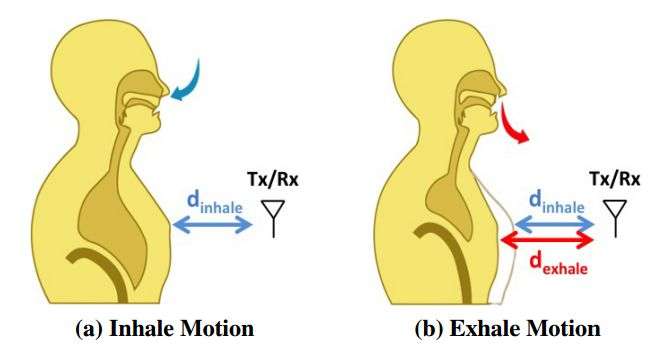A team of researchers out of MIT has announced a new technology called Vital-Radio, a wireless sensing system that monitors the occupant’s breathing and heart rate without the need for any sort of body instrumentation.
That means no nasal probes. No specially engineered mattresses. No chest bands. In fact, Vital-Radio is so sensitive, it doesn’t require the person to look at the system in order to monitor their vitals, and it is so efficient, it can track multiple people at once.
Obviously, one of the bigger challenges the team faced was the fact that at any point in the day, occupants in a Vital-Radio home could be either asleep or awake. Not only does this change in state alter the intensity of the vital signs being produced by the occupants, it also means the system needs to be able to operate properly in an environment affecting the wireless signal and interfering with the tracking focus.
“Past work addresses this challenge by requiring that only one person be present in front of the device and that the person remains still. In contrast, Vital-Radio recognizes that one can address this problem by building on recent technologies that localize users using wireless signals. Specifically, Vital-Radio first localizes each user in the environment, then zooms in on the signal reflected from each user and analyzes variations in his reflection to extract his breathing and heart rate. By isolating a user's reflection, Vital-Radio also eliminates other sources of interference including noise or extraneous motion in the environment, which may otherwise mask the minute variations due to the user's vital signs,” team members Fadel Adib, Hongzi Mao, Zachary Kabelac, Dina Katabi and Robert Miller said.
While the only audience for this technology might seem like adults with conditions that require their vitals be monitored, it could also serve parents concerned with their children’s vitals (e.g. if a child is breathing normally while asleep) or adult children taking care of their elderly parents in their home (e.g. checking for irregular heartbeats). This system could also prove particularly useful to healthcare professionals.
“Breathing and heart rate would be interesting in hospitals if you want to monitor people without having things on their body,” said Adib.
The hardware for the Vital-Radio was produced using a Frequency Modulated Carrier Waves radio designed by past work on wireless localization. For those unfamiliar, this technology is a special form of radar technique. Per the team, their device generates a signal that sweeps from 5.46 GHz to 7.25 GHz every 2.5 milliseconds, transmitting sub-mW power. These parameters were chosen so the system would be compliant with FCC regulations for consumer electronics. The received signal is then digitized and transmitted over an Ethernet cable connected to a computer for real-time processing.

In terms of experiments, the group used the Vital-Radio prototype on 14 subjects. During the tests, participants wore casual attire: shirts, t-shirts, hoodies, and jackets of all different fabrics. The team found that across the experiments, Vital-Radio’s median accuracy in measuring breathing and heart rate was 99.4% and 99%.
Looking ahead, Adib said the team hopes their system will be made sensitive and accurate enough to monitor the heartbeat of a fetus while inside its mother.
Further details behind Vital-Radio are reported in the team’s paper, entitled “Smart Homes that Monitor Breathing and Heart Rate”. You can read it here.
Via Phys.org
Advertisement
Learn more about Electronic Products Magazine





